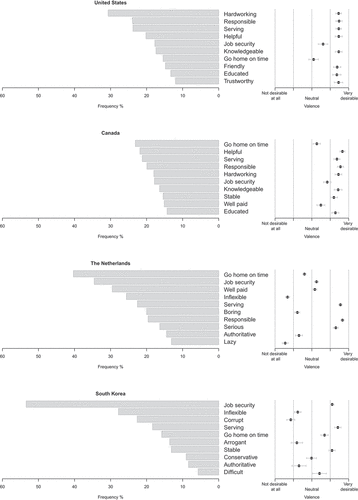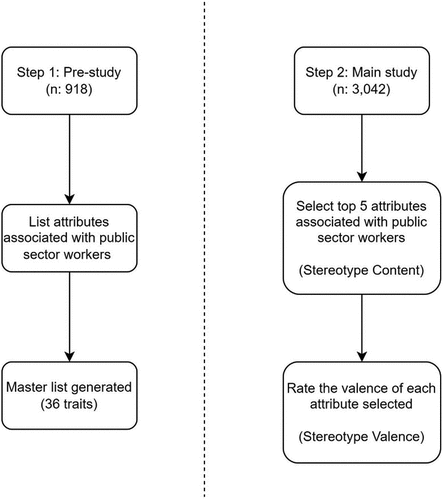Figures & data
Table 1. Sample descriptives of study 1.
Table 2. Master list of thirty-six traits.
Table 3. Sample descriptives of study 2.
Figure 2. Stereotype profile of public sector workers across countries.

Figure 3. Stereotype profiles of public sector workers in the United States, Canada, the Netherlands, and South Korea.

Table 4. Post-hoc pairwise country comparisons.
Table S1. Stereotypes for public sector workers in all countries combined (n = 3,042).
Table S2. Stereotypes for public sector workers in the United States (n = 610).
Table S3. Stereotypes for public sector workers in Canada (n = 623).
Table S4. Stereotypes for public sector workers in the Netherlands (n = 1,176).
Table S5. Stereotypes for public sector workers in South Korea (n = 633).

